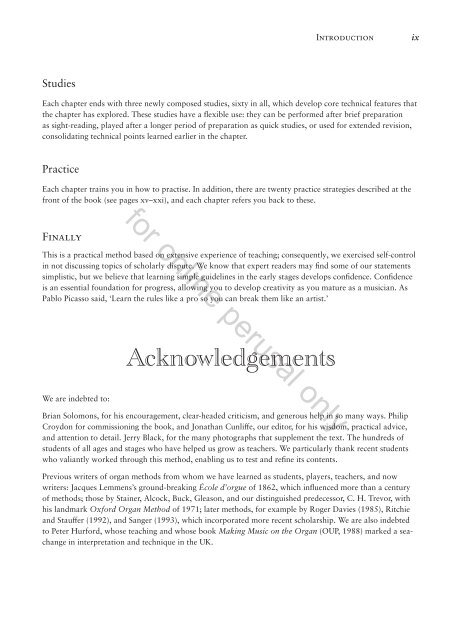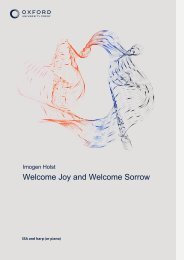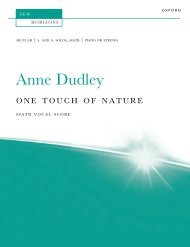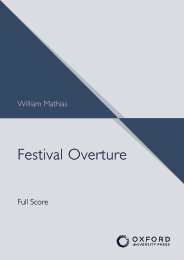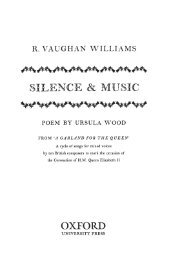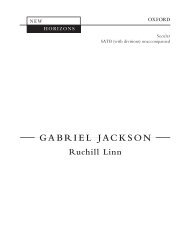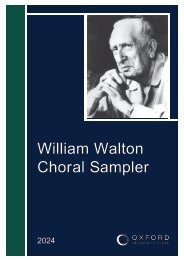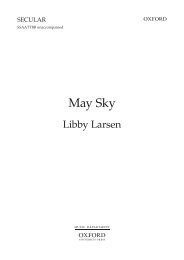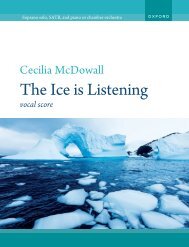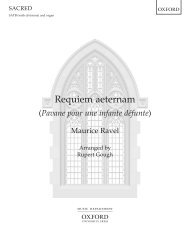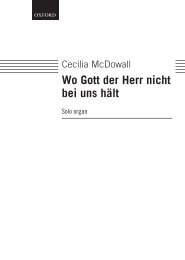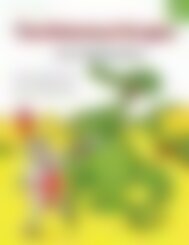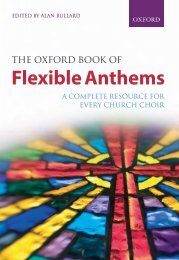New Oxford Organ Method
A single piece of repertoire is the primary focus for each chapter, with preparatory exercises providing the necessary technical work building towards the piece. Each lesson covers four main topics, which are systematically developed: practice methods, registration, fingering and pedalling, and historically-informed interpretation. The method is for keyboard players of any age who are establishing first steps at the organ with or without a teacher. It will also serve more experienced organists who want to improve their technique.
A single piece of repertoire is the primary focus for each chapter, with preparatory exercises providing the necessary technical work building towards the piece. Each lesson covers four main topics, which are systematically developed: practice methods, registration, fingering and pedalling, and historically-informed interpretation. The method is for keyboard players of any age who are establishing first steps at the organ with or without a teacher. It will also serve more experienced organists who want to improve their technique.
- No tags were found...
You also want an ePaper? Increase the reach of your titles
YUMPU automatically turns print PDFs into web optimized ePapers that Google loves.
Introduction<br />
ix<br />
Studies<br />
Each chapter ends with three newly composed studies, sixty in all, which develop core technical features that<br />
the chapter has explored. These studies have a flexible use: they can be performed after brief preparation<br />
as sight-reading, played after a longer period of preparation as quick studies, or used for extended revision,<br />
consolidating technical points learned earlier in the chapter.<br />
Practice<br />
Each chapter trains you in how to practise. In addition, there are twenty practice strategies described at the<br />
front of the book (see pages xv–xxi), and each chapter refers you back to these.<br />
for online perusal only<br />
Finally<br />
This is a practical method based on extensive experience of teaching; consequently, we exercised self-control<br />
in not discussing topics of scholarly dispute. We know that expert readers may find some of our statements<br />
simplistic, but we believe that learning simple guidelines in the early stages develops confidence. Confidence<br />
is an essential foundation for progress, allowing you to develop creativity as you mature as a musician. As<br />
Pablo Picasso said, ‘Learn the rules like a pro so you can break them like an artist.’<br />
Acknowledgements<br />
We are indebted to:<br />
Brian Solomons, for his encouragement, clear-headed criticism, and generous help in so many ways. Philip<br />
Croydon for commissioning the book, and Jonathan Cunliffe, our editor, for his wisdom, practical advice,<br />
and attention to detail. Jerry Black, for the many photographs that supplement the text. The hundreds of<br />
students of all ages and stages who have helped us grow as teachers. We particularly thank recent students<br />
who valiantly worked through this method, enabling us to test and refine its contents.<br />
Previous writers of organ methods from whom we have learned as students, players, teachers, and now<br />
writers: Jacques Lemmens’s ground-breaking École d’orgue of 1862, which influenced more than a century<br />
of methods; those by Stainer, Alcock, Buck, Gleason, and our distinguished predecessor, C. H. Trevor, with<br />
his landmark <strong>Oxford</strong> <strong>Organ</strong> <strong>Method</strong> of 1971; later methods, for example by Roger Davies (1985), Ritchie<br />
and Stauffer (1992), and Sanger (1993), which incorporated more recent scholarship. We are also indebted<br />
to Peter Hurford, whose teaching and whose book Making Music on the <strong>Organ</strong> (OUP, 1988) marked a seachange<br />
in interpretation and technique in the UK.


